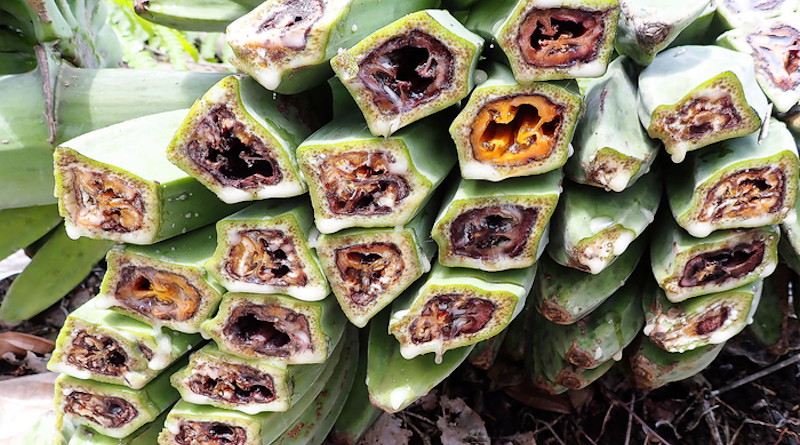Arriving In Mainland Malaysia, Banana Blood Disease Now Poised To Spread Throughout Southeast Asia
The world’s most consumed fruit and an important staple for many developing companies, bananas are increasingly threated by Blood disease, so named because cut banana stems look like they are bleeding. Blood disease causes fruit rot, leaf wilt, and plant death. There is no known cure for the disease.
Banana Blood disease was first reported in Kayuadi Island in South Sulawesi, Indonesia in 1905 and so severely devastated the banana plantations that they were abandoned. The disease was contained to this small area for 60 years due to restrictions on movement of banana plant materials, but eventually it escaped.
In 1987, Blood disease was found in West Java and it spread rapidly across the Indonesian archipelago – it is now recorded in 25 of the 34 provinces. The disease was so brutal that many farmers were forced to abandon production. More recently the disease has made it to peninsular Malaysia, making it highly likely the disease will continue to spread to other Asian countries.
“Without intervention, the losses are likely to be devastating due to epidemics in areas where growers have no experience managing this disease,” explained Jane Ray, a PhD student at the University of Queensland who is studying the biology and epidemiology of Blood disease. “I am determined to understand this disease and use this information to develop improved diseases management options, helping to reduce crop loss and mitigate the risk of spread to new areas, improving food security in the tropics.”
Ray and colleagues carefully reviewed multi-lingual literature in Dutch, Indonesian, and English to gather historical knowledge of the disease. They also conducted extensive surveys across the islands of Indonesia to validate the historical distribution data and determine the current geographic dispersal and pattern of spread of Blood disease.
Their study confirmed Blood disease in 18 different varieties of banana, including Cavendish, the world’s most popular variety of banana, and other members of the Musa genus. The study also found that varieties previously reported as unaffected by the disease are now included among reported infections.
“Greater clarity regarding modes of disease transmission is urgently required to develop effective disease management approaches as the rapid expansion of blood disease is an emerging threat to banana production in Southeast Asia,” said Ray. “Our study shows that all disease problems start small and can be contained if acted on early but if left unchecked and allowed to spread, they can become major constraints to production over large geographic areas.”
Intervention is crucial to reduce further disease spread. Ray also notes that there are many plant disease problems in the tropics that need to be better studied to improve food security.

